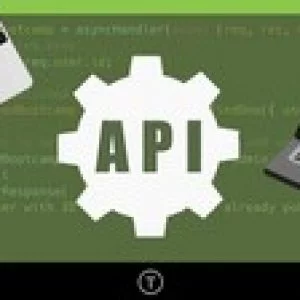
In this course, you’ll learn how to implement a sentiment analysis to a chatbot. You will teach your bot how to be emotionally sensitive. And most urgently how to spot a frustrated user and save the day.
In the course, we’ll be working with my code from the messenger chatbot course. Even if you did not take that course, you’d be able to take the code and work with it.
We’ll use Node.js for programming and GIT for deploying and version control. The bot will is hosted on Heroku, but you can simply host it anywhere else where they support Node.js. We’ll use DialogFlow to process natural language. DialogFlow will help us understand what users want.
In the process, you’ll learn how sentiment analysis works behind the scenes and how to implement sentiment analysis to a chatbot.
In the first section, we’ll take an overview of the app infrastructure and get familiar with the tech stack, which is the technology used in this course.
The second section will introduce you to Sentiment analysis, what is it and how it can benefit a chatbot. We’ll look at common implementation scenarios in a chatbot.
Do you want to know the difference between the rule–based approach and automatic approach with machine learning? We’ll go through examples of both and make a little demo for each. You’ll get familiar with dictionary–based solution AFFIN and Google’s natural language API and IBM Watson natural language solution. I will gently introduce you to the algorithms they use and how they work. So you know how things work inside that black box.
Instructor Details
Courses : 6
Specification: Sentiment analysis for chatbots – DialogFlow, IBM Watson
|
5 reviews for Sentiment analysis for chatbots – DialogFlow, IBM Watson
Add a review Cancel reply
This site uses Akismet to reduce spam. Learn how your comment data is processed.

| Price | $14.99 |
|---|---|
| Provider | |
| Duration | 2.5 hours |
| Year | 2020 |
| Level | Intermediate |
| Language | English |
| Certificate | Yes |
| Quizzes | No |

$84.99 $14.99






Shahnaz Khan –
Few things are really explained quite well. Facebook code looks like part of another course and not explained well.
Empire State –
It was a great match. Jana is exceptionally good at creating courses that meet the learner where they are, but elevate their understanding with very little friction throughout the journey.
Ravikiran –
an excellent explanation of topics
Peter Choy –
I enjoy this course. Though I have only skimmed through it quickly, I understand the usability for such a course for my own bot development. Keep it updated, Jana, as I will be back here again. Though I have given the course a 4.5 Star, it is the best score I would give to all courses I attend because I always feel that there is room for improvement. I will search for and look forward to other courses you have.
Rajesh Konanki –
facing trouble in understanding the accent and translator is mistranslating the content in the wrong way. Not so helpful as of now.